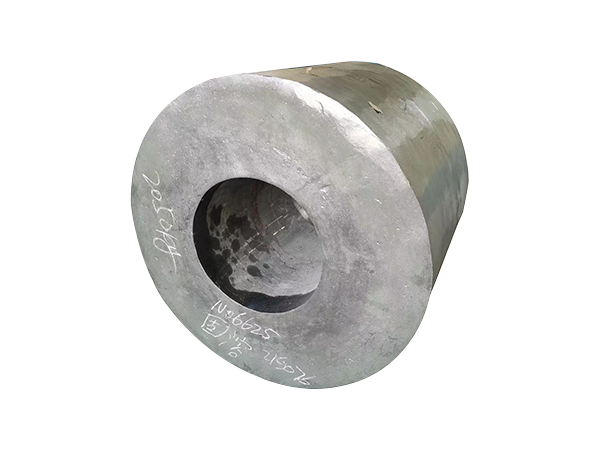Inconel 625
For any temperature and concentration of hydrochloric acid has excellent corrosion resistance. At the same time, it has good corrosion resistance to sulfuric acid, acetic acid, formic acid, phosphoric acid and other non-oxidizing media.
Classification:
Product Display
Key words: nickel-based alloy material
- DESCRIPTION
-
Overview
Nickel-chromium-aluminum alloy, the alloy is added with niobium, which together with molybdenum hardens the alloy matrix, thus showing high strength without heat treatment. The alloy is resistant to various harsh corrosive environments, especially pitting and crevice corrosion. It is used in chemical industry, aviation and marine engineering, pollution control equipment and nuclear reactors. Chemical composition

C: ≤0.10; Carbon
Si: 0.50; Silicon
Mn: ≤0.50; Manganese,
P: ≤0.015; Phosphorus,
S: ≤0.015; Sulfur,
Ni: 58; Nickel,
Cr: 20~23; Chromium,
Mo: 8.0~10.0; Molybdenum,
Fe: ≤5.0; Iron,
AL: ≤0.40; Aluminum,
Ti: ≤0.40; Titanium,
Nb: 3.15-4.15; Niobium,
Cu: ≤0.070; CopperMetallographic structure
Inconel 625 is a solid solution type matrix-strengthened face-centered cubic lattice structure alloy.
Characteristics
Due to the low carbon content and stabilization heat treatment, Inconel625 still shows only a small sensitization trend after being kept at 650~900℃ for 50 hours. Low carbon Inconel 625 in the softened annealed state (Inconel 625Gr.1) is used in applications involving humid corrosion and is approved by TUV for the manufacture of pressure vessels within -196-450℃.
When used at high temperatures above about 600℃, high strength and creep rupture resistance must be achieved. High carbon Inconel625 in the solution annealed state (Inconel625Gr.2) can meet customers' requirements for this application in some product forms.Corrosion resistance
625 alloy exhibits excellent corrosion resistance in many media, and has excellent resistance to pitting, crevice corrosion, intergranular corrosion and erosion in chloride media. It has good resistance to inorganic acid corrosion, such as nitric acid, phosphoric acid, sulfuric acid, hydrochloric acid, etc., and also has resistance to alkali and organic acid corrosion in oxidizing and reducing environments. Effective resistance to chloride ion reduction stress corrosion cracking. It hardly produces corrosion in seawater and industrial gas environments, and has high corrosion resistance to seawater and salt solutions, even at high temperatures. No sensitivity during welding. It is resistant to carburization and oxidation in both static and circulating environments, and is resistant to corrosion by chlorine-containing gases.
Applications
1) Soft annealed low carbon Inconel625 (Gr.1) alloy is best used in pollution control equipment in the chemical processing industry, marine engineering and environmental protection fields.
Typical applications are:
1. Superphosphoric acid production equipment;
2. Nuclear waste processing equipment;
3. Pipes for acid gas production;
4. Pipe systems and riser protection shells in oil exploration;
5. Offshore industry and marine equipment;
6. Flue gas scrubbers and damping elements;
7. Chimney linings.
A nickel-chromium-molybdenum alloy with the addition of niobium, which acts with molybdenum to harden the alloy matrix, thereby exhibiting high strength properties without heat treatment. The alloy is resistant to various harsh corrosive environments, especially pitting and crevice corrosion. It is used in chemical, aviation and marine engineering, pollution control equipment, and nuclear reactors.
The low carbon alloy 625 after softening annealing is widely used in the chemical process industry, and its good corrosion resistance and high strength make it can be used as a thin structural component. 625 alloys can be applied in contact with seawater and subjected to high mechanical stress. Typical application areas:
1. Components of organic chemical processes containing chlorides, especially where acid chloride catalysts are used;
2. For the manufacture of digesters and bleaching ponds for the pulp and paper industry;
3. The absorption tower, reheater, flue gas inlet baffle, fan (wet), agitator, deflector and flue in the flue gas desulfurization system;
4. For the manufacture of equipment and components used in acid gas environments;
5. Acetic acid and acetic anhydride reaction generator;
6. Sulfuric acid condenser.
Related Products
Online Message


